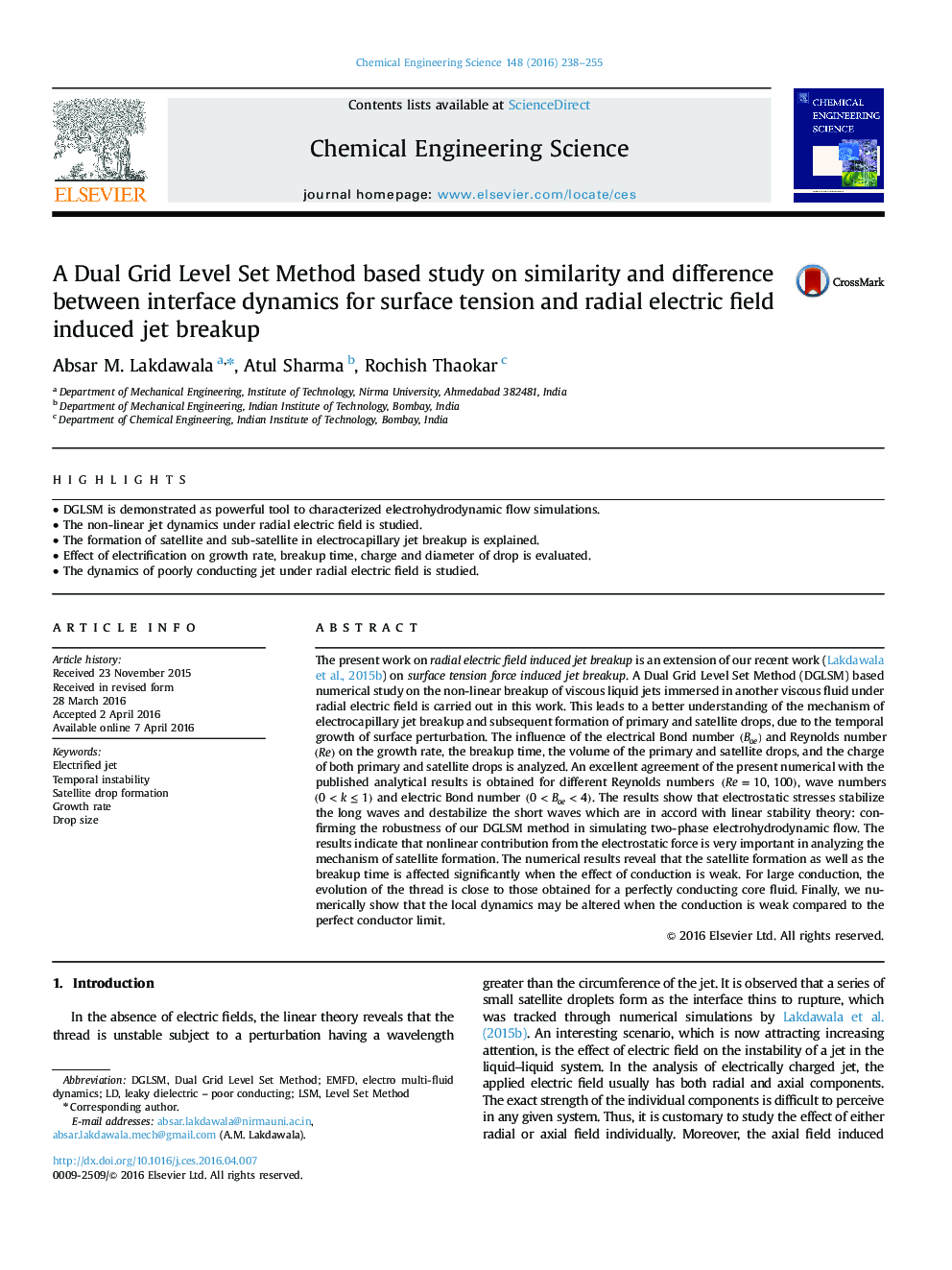| کد مقاله | کد نشریه | سال انتشار | مقاله انگلیسی | نسخه تمام متن |
|---|---|---|---|---|
| 154402 | 456837 | 2016 | 18 صفحه PDF | دانلود رایگان |
• DGLSM is demonstrated as powerful tool to characterized electrohydrodynamic flow simulations.
• The non-linear jet dynamics under radial electric field is studied.
• The formation of satellite and sub-satellite in electrocapillary jet breakup is explained.
• Effect of electrification on growth rate, breakup time, charge and diameter of drop is evaluated.
• The dynamics of poorly conducting jet under radial electric field is studied.
The present work on radial electric field induced jet breakup is an extension of our recent work ( Lakdawala et al., 2015b) on surface tension force induced jet breakup . A Dual Grid Level Set Method (DGLSM) based numerical study on the non-linear breakup of viscous liquid jets immersed in another viscous fluid under radial electric field is carried out in this work. This leads to a better understanding of the mechanism of electrocapillary jet breakup and subsequent formation of primary and satellite drops, due to the temporal growth of surface perturbation. The influence of the electrical Bond number (Boe)(Boe) and Reynolds number (Re)(Re) on the growth rate, the breakup time, the volume of the primary and satellite drops, and the charge of both primary and satellite drops is analyzed. An excellent agreement of the present numerical with the published analytical results is obtained for different Reynolds numbers (Re=10,100)(Re=10,100), wave numbers (0
Journal: Chemical Engineering Science - Volume 148, 12 July 2016, Pages 238–255
